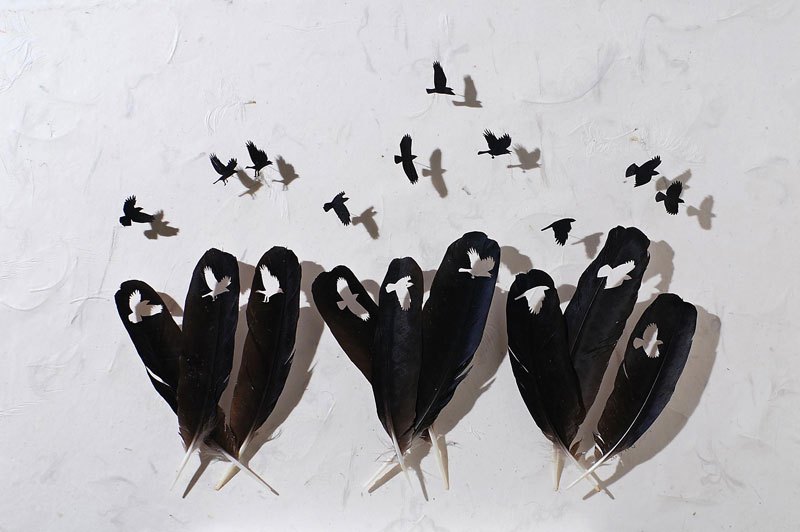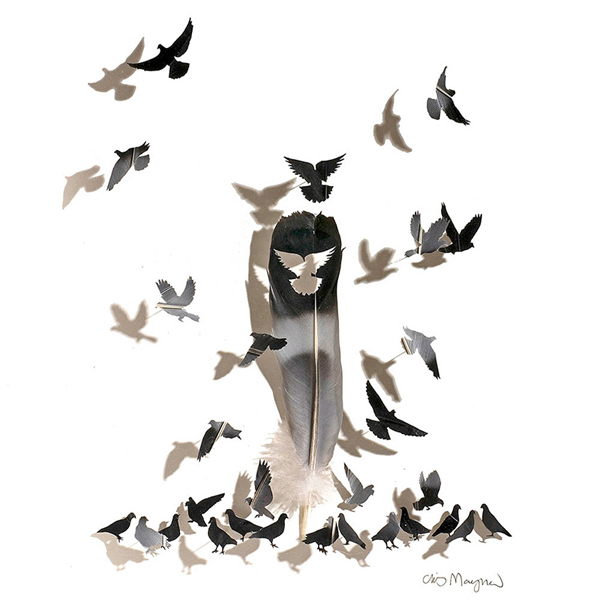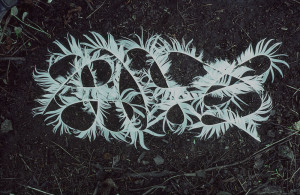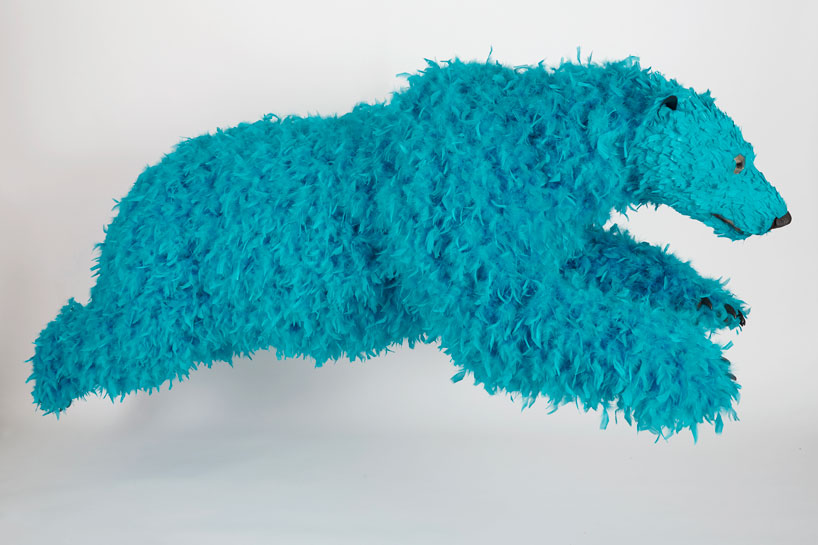Creativity re-envisions the long established—art made from feathers.
One way to cultivate creativity is to make art from the mundane. There is tremendous freedom in experimenting with a range of common everyday objects without any preconceived notions. Simply handle the media and reflect on, and then play up, its inherent characteristics. This month’s medium is feathers.
In addition to evoking the characteristics of the birds from which they come—think of the differences between eagle, peacock and pheasant—feathers have come to symbolize the power of the wild and freedom from earthly confines. Across time and cultures, feathers have symbolized ascension, enlightenment, and spiritual evolution. Fundamental to masquerade masks, boas, and cabaret dancers, feathers also evoke the glamorous, the flirtatious, and the whimsical. And through feather fashion trends, and the resulting decimation of bird populations, feathers have likewise come to symbolize vanity, decadence, and environmental destruction. Their physical characteristics are equally diverse and distinct. Exceptionally light, colorful, and fluffy, feathers have been used to embody the fragile and the sensitive. Feathers’ diverse applications and long history of use presents its own challenge for artists who want to express something new. Enjoy, you’ll never look at feathers the same way again.
- Kate MccGwire uses feather sculptures to explore the play of opposites on an aesthetic, intellectual and visceral level. In Vex, Stiffle, and many of her other sculptures Kate MccGwire creates beautiful and disturbing feather-clad creatures in museum displays that defy naturalist categorization. Heave and Sluice spew alluring parasite-ridden pigeon feathers like a blown water pipe. Evacuate plays with beauty and consumption.
- For Chris Maynard feathers mark nature’s pinnacle of achievement: the intersection of function and beauty. They make flight possible, insulate against water, sun and wind; and their colors and patterns help them hide and attract mates. In his shadowboxes Maynard transforms feathers with sensitive surgeons tools to explore themes of ecology and biology.
- Isa Barbier suspends feathers on transparent filaments to create floating geometric installations that are both ethereal and massive.
- Andrew Goldworthy uses feathers like his other natural found objects to create delicate temporal installations to make you see the world’s structures and processes in a new light.
- Paola Pivi creates a whimsical installation of prancing bears adorned in neon-colored feathers.
- In her installations Flock, Argus, and Stratum Susie MacMurray uses feathers as wall and floor coverings to transform a space.
- Alan Rath’s exhibition Irrational Exuberance plays with the movement of feathers.

I deliberately choose materials that possess a beauty and power when used in abundance and in a context beyond which they can popularly lay claim. The common pigeon is considered a pest, dirty and feral. The dove however, is the symbol of purity, peace and hope. Cherished, they are given their own dovecotes to live in yet they are exactly the same type of bird as the pigeon just with white feathers. Pigeon-fanciers would indeed disagree with the opinion pigeons are “rats with wings”, and that dual perspective adds another ʻlayerʼ to the feathers meaning. I find it compelling to work with feathers that connotations are ʻloadedʼ and find it fascinating that each bird has its own mythology and presence. The magpie is regarded as the bearer of bad omens (one for sorrow, two for joy etc), the thief and collector of the bird world. Similarly the crow too has certain associations, seen as a symbol of witchcraft particularly when feathers are found vertical, pointing quill down into the ground.— Kate MccGwire in an interview in Juxtapoz Magazine, March 24, 2010


It is feathers’ forms that draw me in. Certainly, feathers can have lovely colors and varied, interesting patterns. But the shapes and complex structures of the feathers are what makes them unique in the animal world. A museum curator recently told me that they were considering excluding my work from a museum tour around the United States. When I asked why, she said that the feathers were too delicate so she feared they would be damaged. This is a common misperception. We confuse lightness with delicacy. Feathers are made of protein, keratin. It is the same material our fingernails and a bird’s claws and beak are made of. They are made to be tough. At the same time, feathers don’t weigh much. They are light enough for a bird to fly at freeway speeds. They protect a bird for an entire year before they’re molted. They are a marvel of structural engineering.
— Chris Maynard from his blog post “Why I Find Feathers Alluring”, May 4, 2015


I chopped off with a stone the bottom shaft/part of the feather and the top of the feather then peeled down the centre to reveal the white inner shaft… So in a way I killed off the initial appearance of the feather but what I hoped to get was the essential quality of feather. I won’t accept things on the surface, I want to go a bit deeper, I want to get under the surface. It would not only express how I was feeling about the particular material but how I feel about Herons and birds and that whole area.
— Andy Goldsworthy, explaining his use of feathers in his online catalogue and in the 1983 documentary ‘Triangle’


You started it…I finish it is an installation encompassing eight life-size sculptures of bears, adorned with neon-coloured feathers. These flamboyant figures adopt various attitudes and guises, playfully occupying the space of Federation Court, greeting visitors, posing and frolicking: one bear leaps from a balcony; others approach each other as if to dance, or engage in deep philosophical conversation, whilst others recline in joyful, carefree abandon.
— Paola Pivi, watch an author interview, visit her gallery’s website
Share your links to other feather-based art and I will add them to the list. Or, add to the discussion by sharing images of your students’ feather-based explorations.
NOTE: As the teacher, you will need to consider the benefits of when you share works by established artists. When shown early in the process they can get the creative juices flowing, but they can also lead to self-censoring. Remember, the goal is not to create portfolio-worthy pieces, though that may happen. The goal is to practice thinking expansively and to become more artistically fluent, agile, and responsive.
Please share if you know others who create art made from feathers.

Comments are closed, but trackbacks and pingbacks are open.